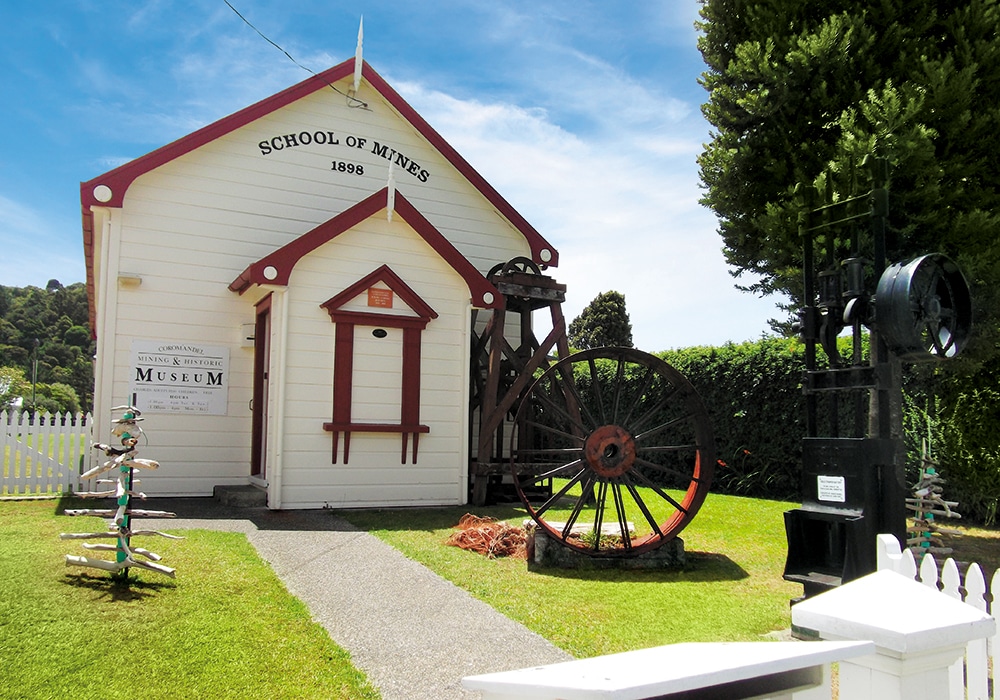Eleanor Hughes goes back in time in the colonial township of Coromandel.
Nearing Coromandel township, SH25 becomes long, straight Tiki Road, ending in a T junction with Wharf and Kapanga roads. The Star & Garter Hotel stands opposite, its roof extending over the pavement. Above, three sash windows look out over the street.
A right-hand turn onto Kapanga Road takes you onto the main road through town, past Pepper Tree Restaurant with its tall, bushy pepper tree, and single-storey wooden buildings with verandahs protecting pedestrians from the weather… The streetscape made me feel as if I was stepping back in time.
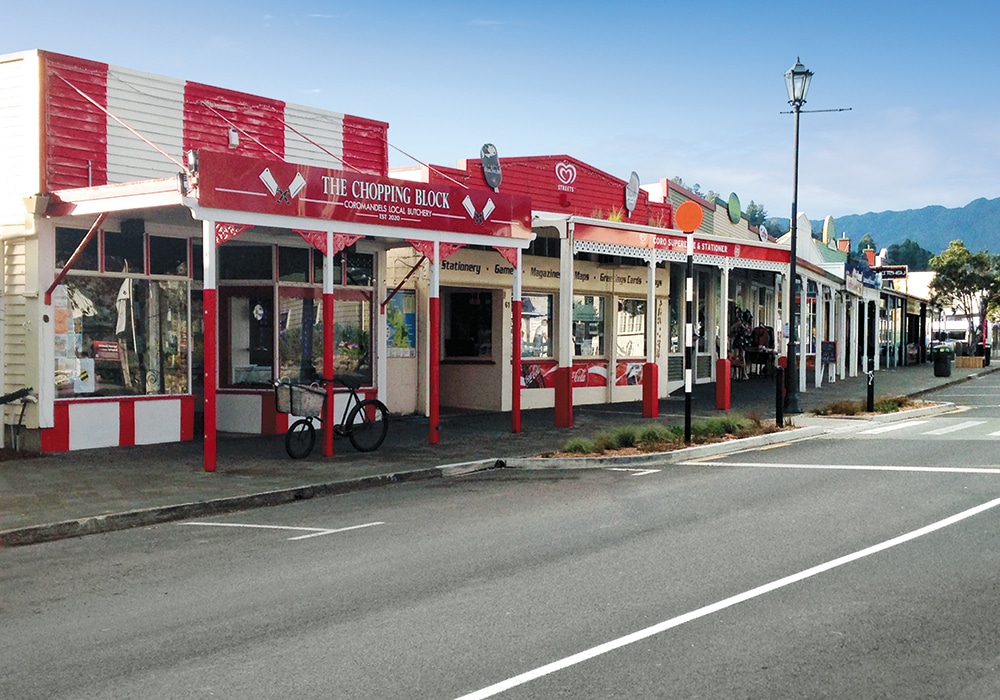
I met up with Ash, from Hot Rocks Adventures, in Samuel James Reserve. A signboard states that Samuel was a prospector, carpenter and ironmonger, coming to the area in the 1870s. The Information Centre is at the rear, and on one side Weta Design Store occupies an early building still partly clad in original corrugated iron. Weta Cafe, at the back, has fantastic coffee, Ash told me.
But I was there to do a walking tour. Over two hours, Ash covered the history and told tales of the local characters of the town that is named after HMS Coromandel, a British naval ship. She entered what is now known as Coromandel Harbour on 21 June 1820 and remained for a year, taking on mainly kauri for ships’ spars and keels, and eventually returning to England. Kauri logging thrived in the area from the 1830s.
The first settlement was at Driving Creek – technically the first goldfield in the country, founded in 1852. The Coromandel I stood in didn’t exist before 1872.
WALKING TOUR
I learned of the great fire which ripped through one side of the town, in 1895. It took out all the buildings from, and including, the original Star & Garter Hotel, where the Four Square is now, to James & Turner Ltd, a hardware store operating since 1889 and rebuilt after the fire.
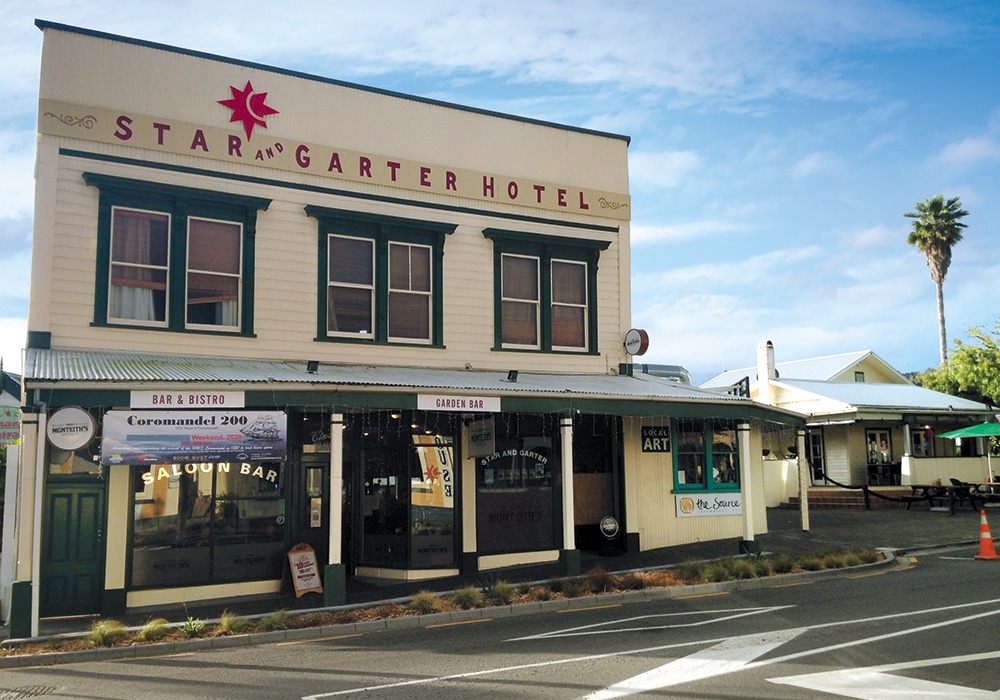
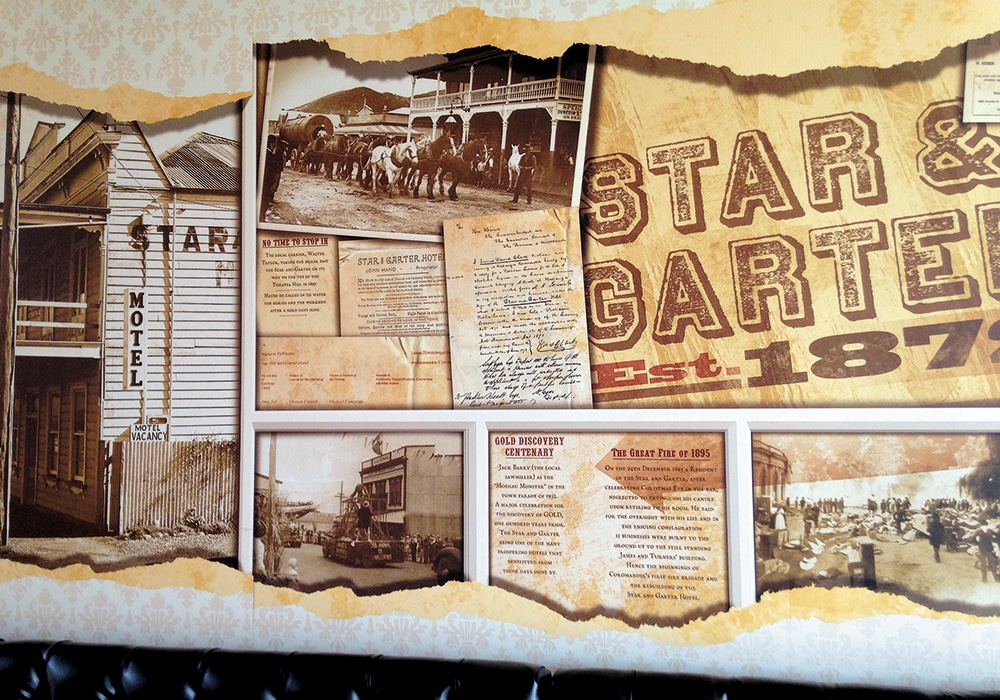
The town once had a number of brickworks, and as we walked over the road Ash pointed out the walls of the stationery shop, made of beach-sand brick. The butcher’s still has its corrugated iron exterior wall; an old bicycle sat outside, the wicker basket on its handlebars packed with imitation meat.
We ambled southwards, passing the Pepper Tree Restaurant and Bar. Once a family home, it was built in 1928 and still sports the original kauri floors. The Star & Garter, sharing a courtyard and kitchen with the Pepper Tree, was originally a lawyer’s office, where many mining claims were signed. Later, it became a drapery store. The 45-room, two-storey hotel with balcony, public lounge, ladies’ bar and a stable would have taken up the entire block, covering what is now the supermarket carpark as well.
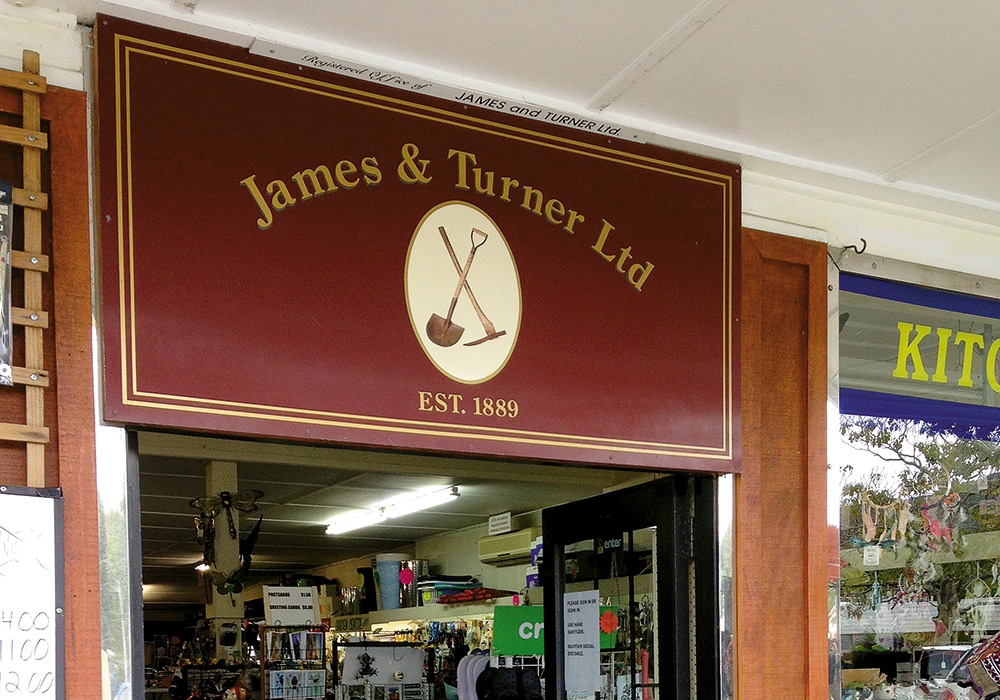
The kauri floors remain in the hotel, and the original kauri counters now form the bar, over which hangs an image of the tribal leader Te Horetā. Known as Taniwha, he lived in the area and evidently met Captain Cook. In the men’s WC there are two vaults once used to store gold. Photos on the walls show the aftermath of the fire.
Opposite the hotel sits the old Assay House – once the ANZ Bank. Behind it there used to be brick buildings that held assaying facilities, where miners could take in rock and have it tested for gold content. I learned that many miners came from Devon and Cornwall, and that the town had 17 pubs, four schools and seven churches. During the gold rush, stamper batteries with a total of 150 stamp heads (which pounded rock to extract gold), went for 24 hours, six days a week.
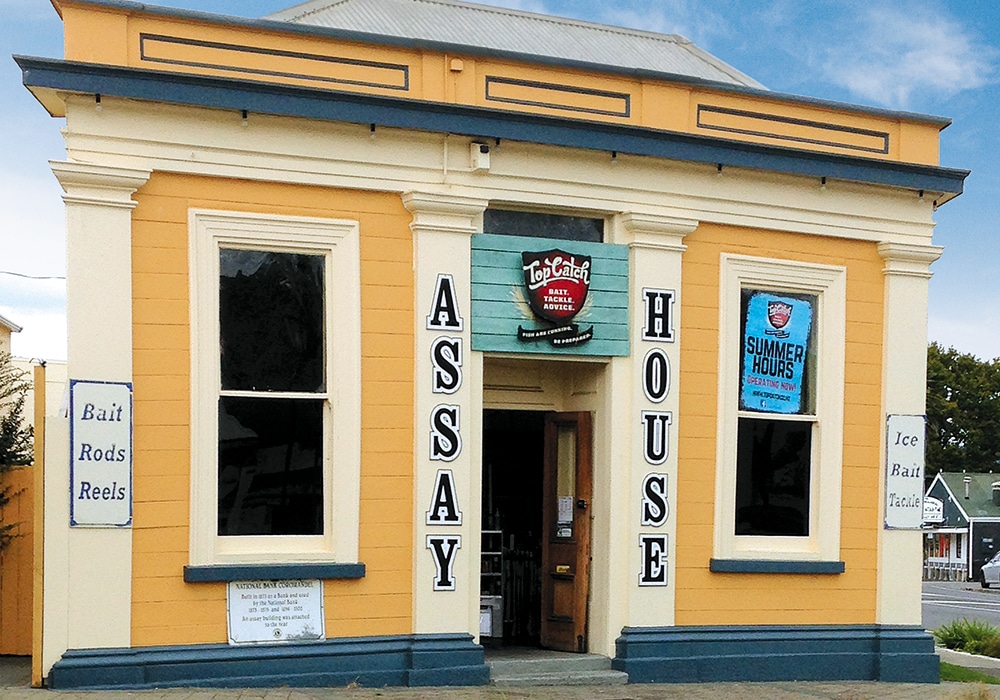
Next door to the Four Square is Wharf Road Cafe, which they say has the best waffles in town. Excavations for the supermarket turned up smashed kegs, as the old beer cellars of the original Star & Garter lay beneath.
A small brickworks was built on Pottery Lane, which we crossed to reach the bakery housed in a 1920s Art Deco building. The fig tree outside is apparently studied by botanists as it’s so old. A few metres along, the Admiral Arms Hotel has been operating since 1872. The verandah posts on the street and the internal structure are original, the cladding new.
Opposite in Whangarahi Reserve, which in the 1860s was the site of a store and public house, a signboard shows a 1905 photo of Alfred Jerome Cadman’s funeral cortege. A senior Mason, Minister of Mines and Minister of Native Affairs, he was the first person in the country to allow women into mines – in fact, into the Hauraki Mine just down the road. A sculpture of the Coromandel in a bottle sits at the far end of the reserve, with its story recorded. We looked out over the creek, where kauri logs would have raced down to be caught in booms and taken to one of several mills along the water’s edge. On the opposite side, where yachts were now sitting on trailers, the first police station and courthouse once stood.
KAURI BLOCK WALK
Over the creek and down a right of way beside 356 Wharf Road, the Kauri Block Walk is a steady, 15-minute uphill track on Hauraki Hill, the site of the Hauraki Mine. At the top, an old pa site gives spectacular views over the harbour and township. I then headed downhill through regenerating bush and kauri plantings to Harbour View Road, the entire walk taking around 45 minutes.
An information board revealed that gold was discovered on the hill in 1862; a photograph shows a mine in the late 1800s. The walk back along Wharf Road to town took me past an oyster factory, Coromandel Wharf, and a mine entrance which goes in 150 feet. It wasn’t blocked off but was pretty muddy, and you’d need a torch to go further than about 5 metres.
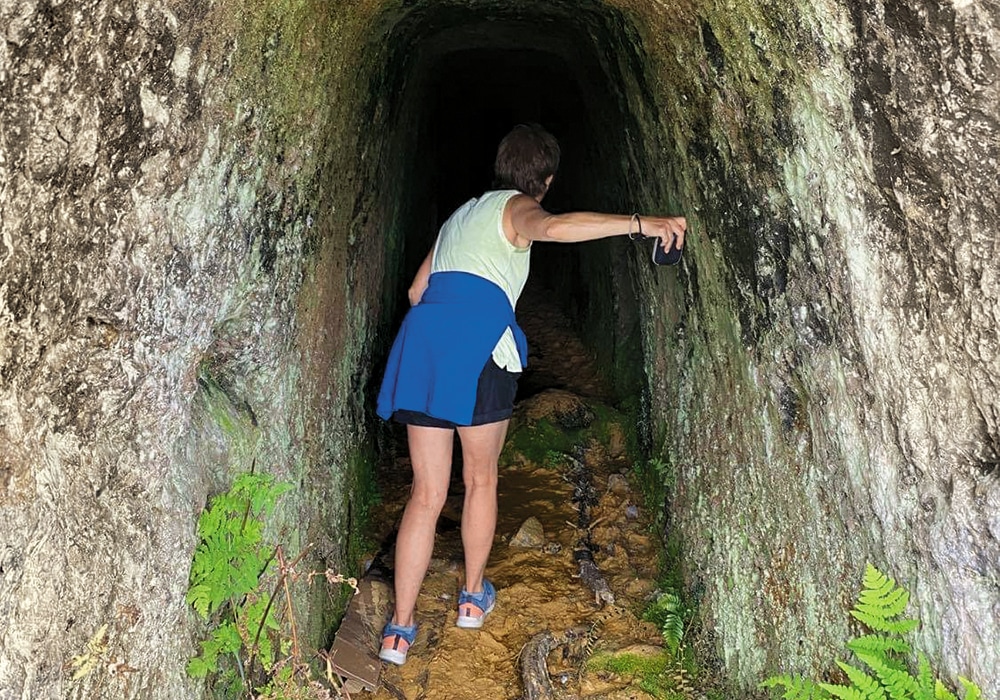
I headed along Kapanga Road to the other end of town, passing an empty shop with a window displaying photographs of original homesteads. Further up is Hauraki House Reserve, where Lower Township School was opened in 1877. The cream-coloured building now houses Hauraki House Art Gallery.
The former courthouse, post and telegraph office, built in 1873, is the same colour, as are the Coromandel Citizens Hall (1897), and the original Coromandel Hotel, known as the Top Pub. Nearly opposite, Coromandel Top 10 Holiday Park’s office is in the quaint, verandahed cottage that was the Hauraki Mining Company’s office. Further along the road is the blue and white Masonic Lodge, built in 1899.
COROMANDEL SCHOOL OF MINES MUSEUM
The Coromandel School of Mines Museum is situated past these buildings at 841 Rings Road, housed in the original School of Mines building, dating from 1898. The school was actually established in 1887, closing in 1926 when mining declined. The museum is crammed with artefacts from logging and gold-mining days, including a replica of the Success Mine, photographs of early Coromandel settlers and life, furniture and paraphernalia from the now-closed Masonic Lodge, rocks found in the area and other local historic items. The original lock-up, used by the local constabulary as a holding facility for people arrested, is out the back, where a newspaper clipping has stories of those who spent time there.
GOLD PANNING
I met up with Ash again along Driving Creek Road and we drove on, turning onto Old Colville Road, which once went all the way to Colville. Parking probably less than 1km up, we walked down the overgrown remains of the road to a river gurgling over yellowish rock and boulders of quartz. Gold panning time!
Once a gold stamper stood opposite where we stopped, and a cableway went up to the Tokatea Reef, a quartz reef, in the steep Tokatea Range beyond. Miners would hook kerosene tins full of rock onto the cable, putting a claim number and their details on it, and send it down to be tested for gold content. It’s peaceful now, but back in the 1800s thumping stamper batteries would have echoed through the valley. I learned that there are the remains of a tramway in the bush, along with the battery foundations. Ash gave me a brief lesson on how gold is formed, and the history of gold mining at Driving Creek, Tokatea and Hauraki Hill, all nearby.
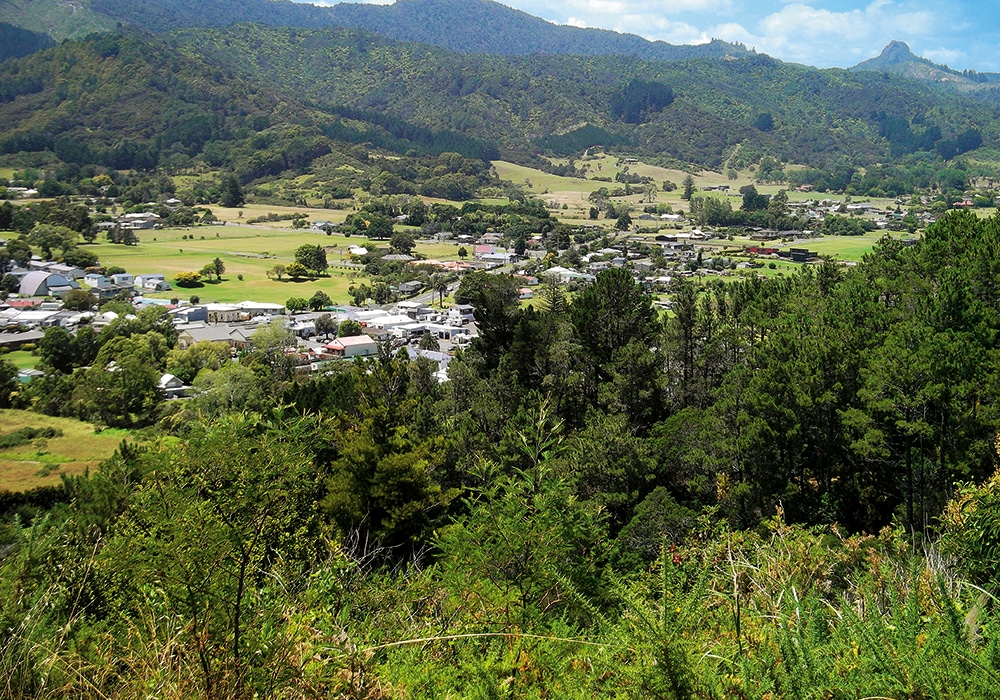
The spot where we stood, a beach on the inside bend of the river, was apparently perfect for finding gold. It’s here that the water loses energy and dumps material it’s carrying down river. About 15 years ago a suction pump was brought to the site and sluiced about 150kg of sand, yielding one ounce of gold.
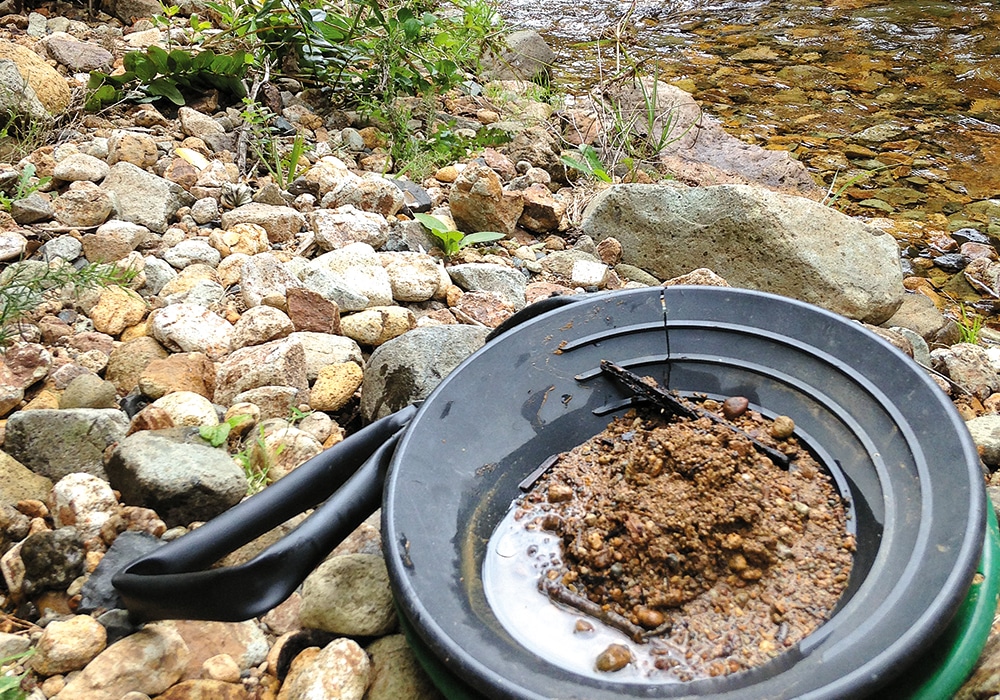
Ash shovelled sand, shingle and small pebbles into a plastic, wok-like pan. With hands at 2 and 10, like a steering wheel, I put the pan under water and ‘drove’ it crazily to settle any gold at the bottom. Then I made waves, tipping the front of the pan under water and sluicing bigger rocks out. After repeating the process many times, finally only fine material was left. I could see gold flakes. Excitedly, I kept sluicing until only the gold remained on the bottom of the pan.
I left Coromandel with my treasure, like so many others before me, enriched by what I had learnt exploring this old settlement.
MORE INFORMATION
There are a number of Park Over Properties around the town, an NZMCA campsite and other camping grounds: nzmca.org.nz
Hot Rocks Adventures offer guided historical walks and gold panning: hotrocksadventures.com
Coromandel Town Information Centre offers the 90-minute Boom, Bust and Beyond Guided Heritage Tour: coromandeltown.co.nz
Kauri Block Walk details: nzmca.org.nz/trails/kauri-block-track
Coromandel School of Mines Museum: nzmuseums.co.nz

